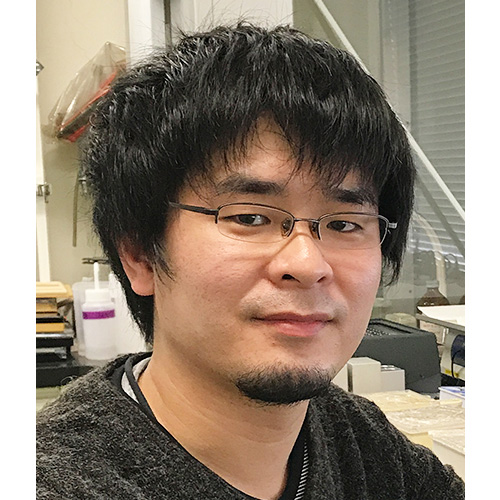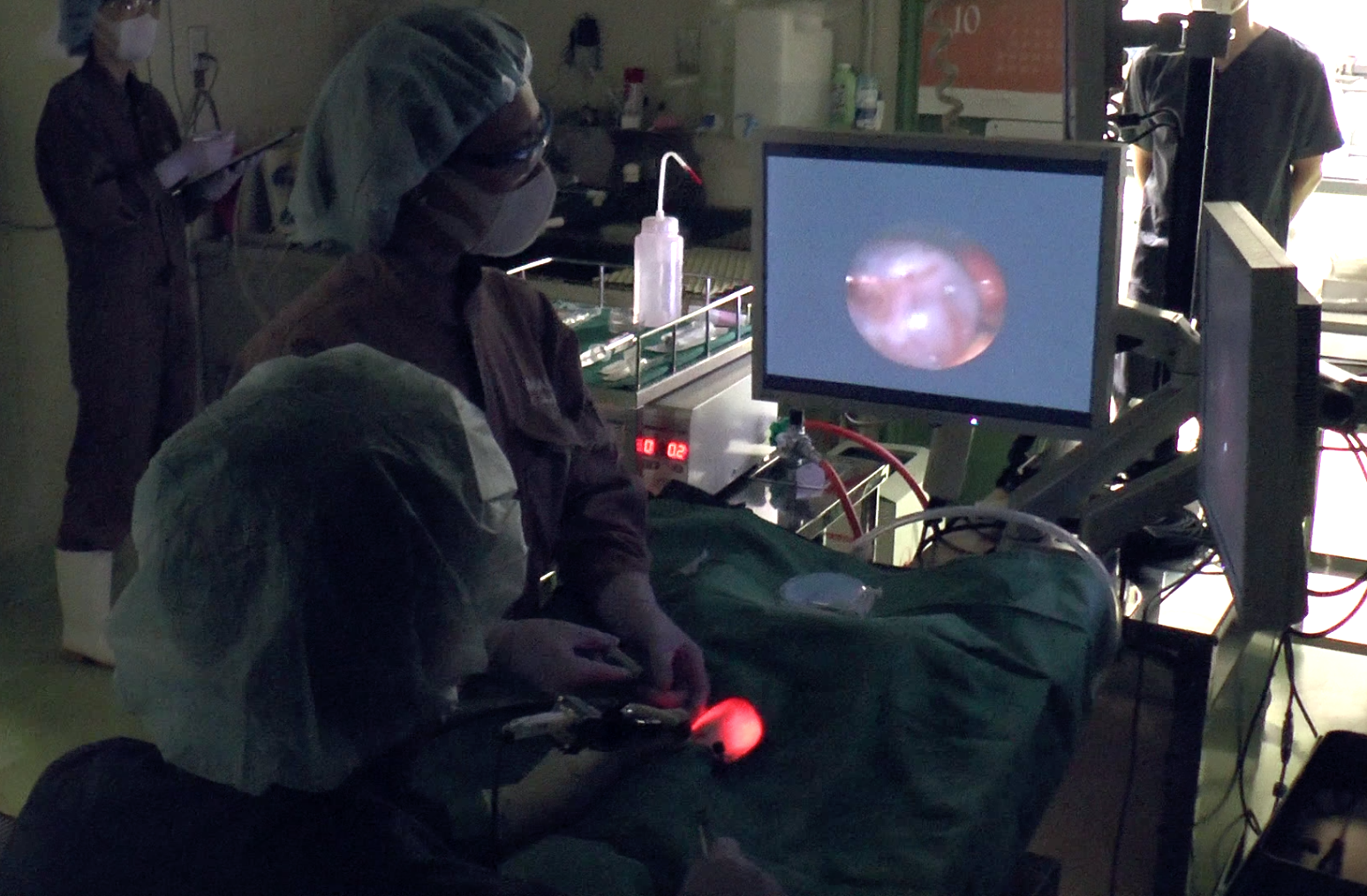
Tomoyuki Tsukiyama
Core Head (PRiME)
- Position
- Associate Professor
- Research Field
- Developmental Engineering, Reproductive and Stem Cell Biology
Research Overview
Establishing basic technologies for innovative primate genome modification
Germ cells are mysterious cells responsible for the continuity of life. I am interested in germ cells, and have consistently studied germ cells or their derivatives, fertilized eggs and pluripotent stem cells, and applied them to animal production.
After joining Research Center for Animal Life Science, Shiga University of Medical Science, which is the only research facility in Japan and only few in the world that can perform developmental engineering using cynomolgus monkeys, which is one of non-human primates close to humans that can be manipulated experimentally, taking advantage of the characteristics of the research center (Fig 1), we started research on developmental engineering in cynomolgus monkeys. To date, we have successfully generated transgenic cynomolgus monkeys using lentiviral vectors and genome-edited cynomolgus monkeys using CRISPR/Cas9 (Fig 2). However, now that simple transgenic or knockout monkeys have been generated, the next focus is on the development of genetic modification techniques that require more advanced vector design. For example, in the cases of gene expression systems using drug-inducible promoters capable of controlling the expression, simultaneous expression of multiple genes, and simultaneous modification of multiple genes using knock-in technology, the conventional methods are inefficient, so that the development of novel method is desired.
To overcome these problems, our laboratory has developed the next generation of innovative primate gene modification technology and is developing the foundation for primate research.

Fig 1: Developmental engineering in cynomolgus monkeys.

Fig 2: Expressions of nephron segment markers in an ADPKD kidney compartment containing multiple cysts. Scale bar, 1 mm. (Tsukiyama T. et al., Nature Communications, 2019)
Biography
Tomoyuki Tsukiyama obtained his PhD from Kyoto University (2011) and undertook postdoctoral training at RIKEN, Center for Developmental Biology (CDB) (2011-2014) as a postdoc. He was appointed Assistant Professor in 2014 in Shiga University of Medical Science and Associate Professor in 2019.
Publications
Tsukiyama T.*, #, Kobayashi K. #, Nakaya M. #, Iwatani C., Seita Y., Tsuchiya H., Matsushita J., Kitajima K., Kawamoto I., Nakagawa T., Fukuda K., Iwakiri T., Izumi H., Itagaki I., Kume S., Maegawa H., Nishinakamura R., Nishio S., Nakamura S., Kawauchi A., and Ema M.*, Monkeys mutant for PKD1 recapitulate human autosomal dominant polycystic kidney disease., Nature Communications, 10(1), 5517, 2019
(* Corresponding author, # Equal contribution)
Sakai Y., Nakamura T., Okamoto I., Gyobu-Motani S., Ohta H., Yabuta Y., Tsukiyama T., Iwatani C., Tsuchiya H., Ema M., Morizane A., Takahashi J., Yamamoto T., and Saitou M., Induction of the Germ-Cell Fate from Pluripotent Stem Cells in Cynomolgus Monkeys., Biology of Reproduction, 102(3), 620-638, 2019
Kobayashi K. #, Tsukiyama T. *, #, Nakaya M., Kageyama S., Tomita K., Murai R., Yoshida T., Narita M., Kawauchi A., and Ema M.*, Generation of an OCT3/4 reporter Cynomolgus monkey ES cell line using CRISPR/Cas9., Stem Cell Research, 37, 101439, 2019
(* Corresponding author, # Equal contribution)
Seita Y., Tsukiyama T., Azami T., Kobayashi K., Iwatani C., Tsuchiya H., Nakaya M., Tanabe H., Hitoshi S., Miyoshi H., Nakamura S., Kawauchi A., and Ema M., Comprehensive evaluation of ubiquitous promoters suitable for the generation of transgenic cynomolgus monkeys., Biology of Reproduction, 100(6), 1440-1452, 2019
Seita Y., Tsukiyama T., Iwatani C., Tsuchiya H., Matsushita J., Azami T., Okahara J., Nakamura S., Hayashi Y., Hitoshi S., Itoh Y., Imamura T., Nishimura M., Tooyama I., Miyoshi H., Saitou M., Ogasawara K., Sasaki E. and Ema M., Generation of transgenic cynomolgus monkeys that express green fluorescent protein throughout the whole body., Scientific Reports, 6: 24868, 2016
Ohinata Y. and Tsukiyama T., Establishment of trophoblast stem cells under defined culture conditions in mice., PLoS ONE, 9(9), e107308, 2014
Tsukiyama T. and Ohinata Y., A Modified EpiSC Culture Condition Containing a GSK3 Inhibitor Can Support Germline-Competent Pluripotency in Mice., PLoS ONE, 9(4): e95329, 2014
Tsukiyama T., Kato-Itoh M., Nakauchi H. and Ohinata Y., A Comprehensive System for Generation and Evaluation of Induced Pluripotent Stem Cells Using piggyBac Transposition., PLoS ONE, 9(3): e92973, 2014
Tsukiyama T., Asano R., Kawaguchi T., Kim N., Yamada M., Minami N., Ohinata Y. and Imai H., Simple and efficient method for generation of induced pluripotent stem cells using piggyBac transposition of doxycycline-inducible factors and an EOS reporter system., Genes to Cells, 16(7): 815-825, 2011
Watanabe T., Takeda A., Tsukiyama T., Mise K., Okuno T., Sasaki H., Minami N. and Imai H., Identification and Characterization of Two Novel Classes of Small RNAs in the Mouse Germline: Retrotransposon-Derived siRNAs in Oocytes and Germline Small RNAs in Testes, Genes & Development, 20(13): 1732-1743, 2006
Research Group
PRiMEJoined
Apr. 1, 2023
